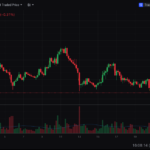Bitcoin (BTC) continues to face a significant supply crunch, with exchange reserves dropping to a two-year low at 2.35 million BTC. Despite price fluctuations, whales and long-term holders persist in moving assets off exchanges, creating a unique trend in market dynamics.
Exchange Reserves Hit Historic Lows
Data from CryptoQuant highlights a steady decline in exchange-held Bitcoin, driven by institutional demand and the rising popularity of ETFs. The trend underscores growing concerns over exchange risks, including hacks and frozen withdrawals, prompting a shift toward self-custody. Tether, for instance, now holds the sixth-largest Bitcoin treasury, signaling the increasing use of BTC as a reserve asset.
Institutional Demand Fuels Supply Crunch
Institutional buyers, including ETF participants and centralized treasuries, have absorbed a significant portion of Bitcoin’s circulating supply. Since January 2024, over 480,000 BTC have been locked into ETFs, reducing the liquid supply on exchanges. Miners, meanwhile, retain their holdings as BTC valuations remain above production costs, further constraining supply.
A New Era of Self-Custody
The trend toward self-custody is evident in the rising number of whale and retail wallets. This shift reflects broader concerns about centralized risks and emphasizes the growing preference for holding BTC independently of exchanges. Projects like DeFi protocols and wrapped Bitcoin (WBTC, CbBTC) are also locking in substantial BTC volumes, adding to the supply scarcity.
Implications for the Market
As BTC approaches a true supply crunch, buyers are scrambling to secure available coins, hinting at a potential bullish phase. However, strategic whales continue to exert pressure on prices through selective selling. The market dynamics suggest that a new bull market could emerge as supply tightens, with expectations pointing to an imminent upward breakout.
What This Means for Investors
The ongoing reduction in exchange reserves and institutional accumulation presents both challenges and opportunities. While Bitcoin’s scarcity may drive future price appreciation, short-term volatility persists as the market adjusts to evolving supply-demand conditions.
This article is for informational purposes only and should not be considered financial advice. Always conduct your own research before making investment decisions.







